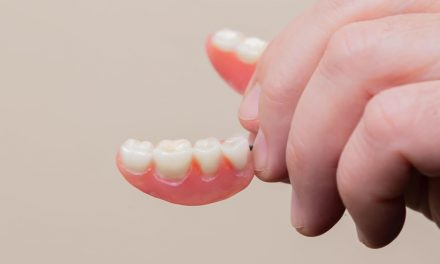If you have a tooth or teeth missing, you are faced with the sometimes difficult choice of having to choose between conventional dentures, like a dental bridge or dental prosthesis, or modern dental implants. The right decision will depend on various factors, and we at Next Smile will guide you through the advantages and disadvantages of the different options. Every tooth has its function in the mouth. If a tooth or several teeth are missing, the gap should be closed. Missing teeth affect people in a variety of ways. First of all, it doesn’t look good, and people are often inhibited form laughing or smiling! Biting and chewing are also negatively affected, which can have an impact on the person’s eating habits. Existing neighbouring teeth can start to tip towards or grow into the gaps, or even loosen, with a risk of losing more teeth. The temporomandibular joints can also be negatively affected.
However, all these unfortunate scenarios can be avoided, because modern dentistry and dental technology offer a variety of dental solutions. We will help you chose the right one for you
A dental bridge, prosthesis or implant can be used to replace missing teeth
With a dental bridge, the remaining teeth are included, because a bridge fixes the dental prosthesis on ‘pillars’. If a tooth gap must be closed, the teeth on both side of the gap the gap become pillars on which the bridge is supported. The bridge body, called the pontic, is the new tooth.
- The dental bridge is permanetly anchored in the row of teeth and can’t be removed from the patient’s mouth. The materials used for dental bridges include all-ceramic, metal-ceramic, high-performance composite or metal alloys.
- A dental prosthesis, however, can be removed from the patient’s mouth to be cleaned for the purposes of oral hygiene. As a general rule, prostheses are used when many teeth are missing, or when the patient no longer has any teeth.
- The prosthesis is anchored to the remaining teeth with brackets, or other retaining elements. When the patient has no teeth, the prosthesis is held in place by the alveolar ridge. The materials used for dentures include plastic, high-performance composites, or metal alloys.
- Dental implants are becoming increasingly popular with patients. It is a modern, scientifically proven and convenient solution for replacing missing teeth. A dental implant functions like an artificial tooth root that is ‘implanted’ into the patient’s jawbone. Because biocompatible materials are used, the implant becomes firmly attached as the bone of the patient’s jaw bonds with it in a process called osseointegration. It then serves to anchor the dental prosthesis.
- Usually the implant consists of two parts – the implant body, which will be the new ‘root’ in the patient’s jaw, and the implant ‘abutment’, which is the new tooth. With dental implants, individual teeth or entire rows of teeth can be replaced. The materials for dental implants include implant body titanium or all-ceramic, all ceramic for the implant abutment, or high-performance composites.
Advantages and disadvantages of a dental bridge and dentures
Dental bridges and dentures have been used to replace missing teeth for many decades, so it is a proven solution. Highly skilled dentists and dental technicians can create long-term stable and functional dentures. The treatment generally is quite short. As a rule, the effort and costs for a dental bridge or dental prosthesis are less than for dental implants. However, dental prostheses can lose their fit for a variety of reasons, for example bone loss in the patient’s jaw. Ill-fitting dentures can cause pain from rubbing on the gums. Eating and speaking can also be negatively affected.
Many patients also find dentures uncomfortable. Dental bridges are more comfortable and fit firmly in the patient’s mouth. However, they have one major disadvantage – the two neighbouring teeth that will serve as anchors or pillars, have to be ground down. This means removing completely healthy tooth material. This flies in the face of modern dentistry because dentists always try to preserve the substance of healthy teeth.
Advantages and disadvantages of dental implants
Filling in a gap in a patient’s teeth with an implant means that the healthy neighbouring teeth do not have to be ground down. The implant fits simply fits into the row of teeth like another natural tooth. If the patient has only a few or no teeth, the patient can be given a fixed denture with the help of implants. So ugly, visible clamps or poorly fitting prostheses are a thing of the past, as is that often annoying palatal plate! An implant-supported denture also ensures that the patient can chew in comfort. The ‘new’ and highly functional teeth look completely natural, so the patient looks good as well.
In short, the possibilities of modern dentistry, with CAD/CAM and digital 3-D technology, is really impressive. Another very positive element is that modern dentistry nowadays tries to operate in a minimally invasive way.





